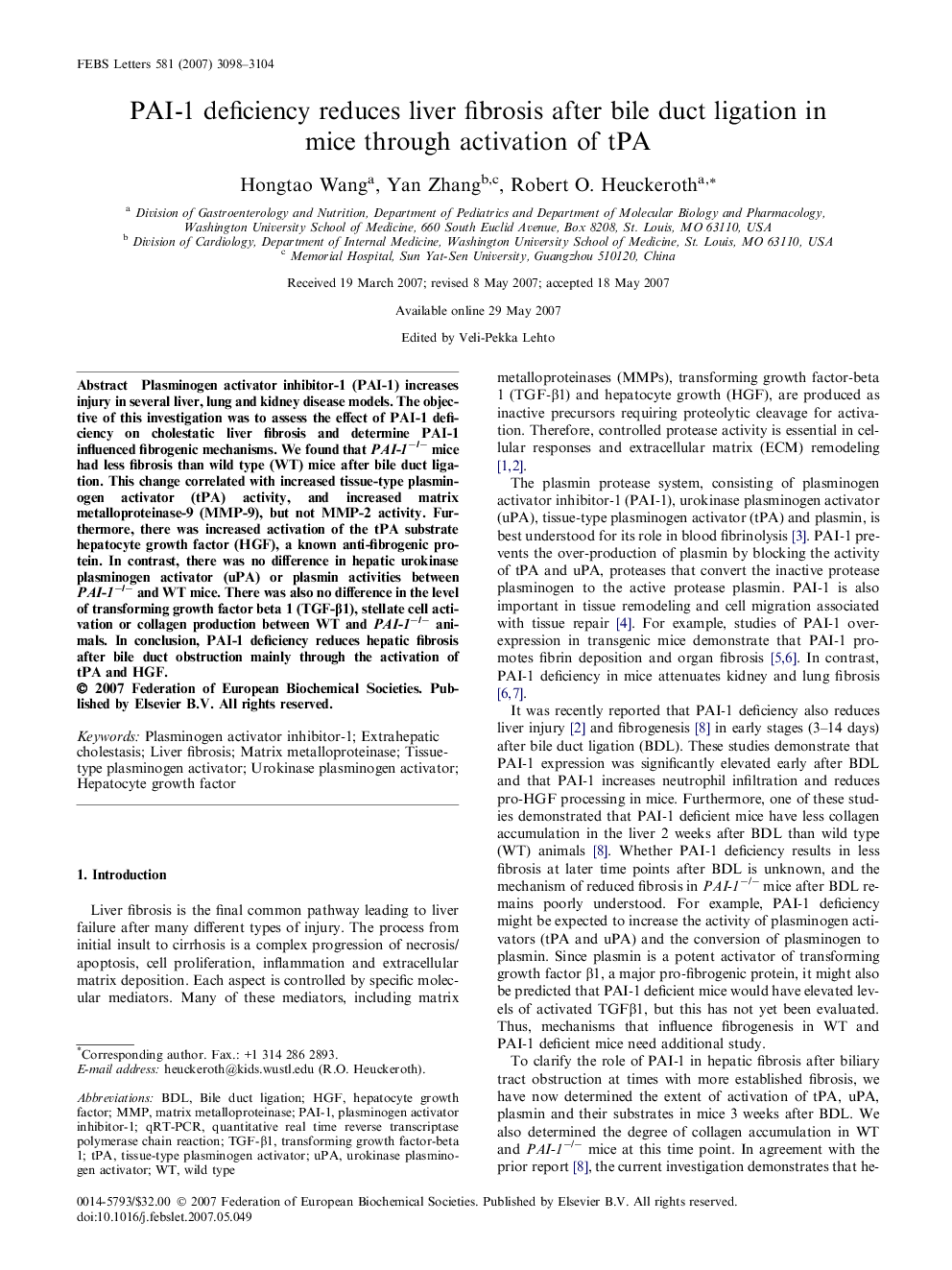| Article ID | Journal | Published Year | Pages | File Type |
|---|---|---|---|---|
| 2051002 | FEBS Letters | 2007 | 7 Pages |
Plasminogen activator inhibitor-1 (PAI-1) increases injury in several liver, lung and kidney disease models. The objective of this investigation was to assess the effect of PAI-1 deficiency on cholestatic liver fibrosis and determine PAI-1 influenced fibrogenic mechanisms. We found that PAI-1−/− mice had less fibrosis than wild type (WT) mice after bile duct ligation. This change correlated with increased tissue-type plasminogen activator (tPA) activity, and increased matrix metalloproteinase-9 (MMP-9), but not MMP-2 activity. Furthermore, there was increased activation of the tPA substrate hepatocyte growth factor (HGF), a known anti-fibrogenic protein. In contrast, there was no difference in hepatic urokinase plasminogen activator (uPA) or plasmin activities between PAI-1−/− and WT mice. There was also no difference in the level of transforming growth factor beta 1 (TGF-β1), stellate cell activation or collagen production between WT and PAI-1−/− animals. In conclusion, PAI-1 deficiency reduces hepatic fibrosis after bile duct obstruction mainly through the activation of tPA and HGF.
